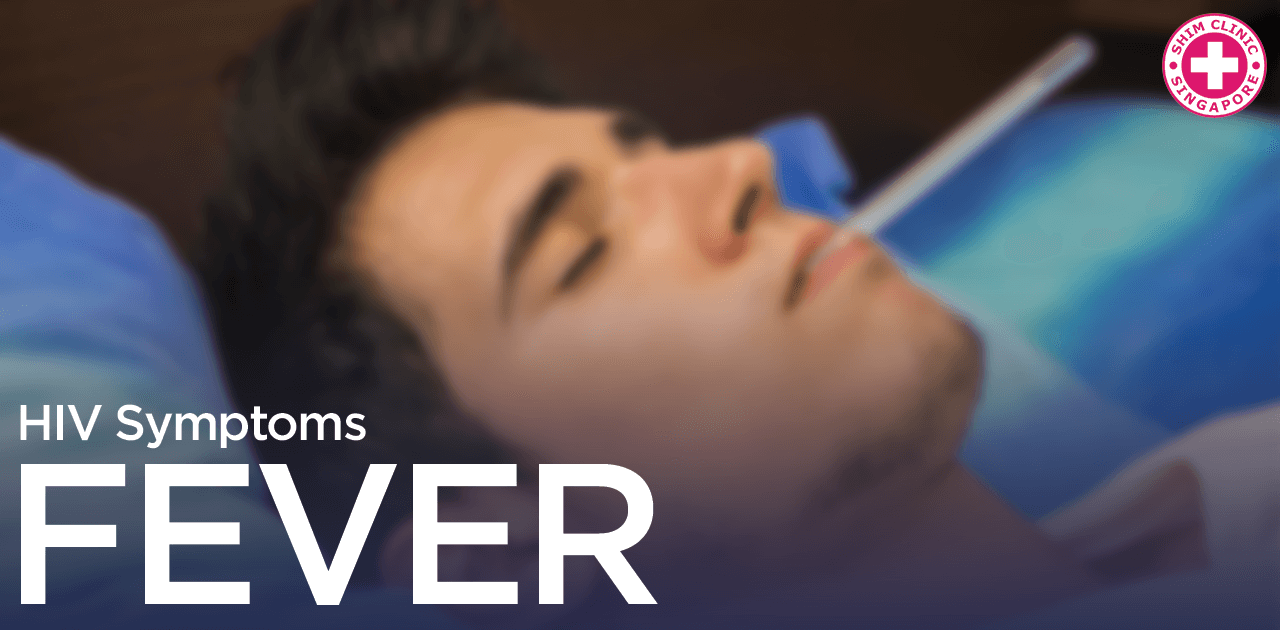HIV Fever Singapore | Shim Clinic
| Help me about HIV Fever ! |

| Permalink: https://shimclinic.sg/hiv-fever |
There may be no symptoms of HIV early in the course of the infection, but some people do experience symptoms. Fever is a common symptom. Because many common viruses can cause a fever, it’s necessary to do an HIV test to diagnose the infection.
When a person is first exposed to HIV, there are often no symptoms. However, some people do experience symptoms of this phase, known as acute HIV infection. The symptoms begin 2 to 4 weeks after the exposure to the virus.
One common symptom of acute HIV infection is a fever. Some people become aware that they have a fever because they start feeling hot. At night, they kick off the blankets on the bed; in the day, they feel comfortable without a jacket while their friends are wearing jackets. Others experience the opposite effect and develop chills. They may need extra covering in order to feel comfortable, with extra blankets at night and extra jackets in the day. This happens because the body is trying to maintain its higher temperature. Many people alternate between feeling hot and feeling chills. This alternating hot and cold feeling is a strong clue that you have a fever.
A fever is a part of the body’s natural defense system. The higher body temperature actually activates the immune system and helps it to fight off viruses and bacteria. Having a fever is actually not dangerous in itself, so it’s not necessary to take medications to lower your fever (such as acetaminophen or ibuprofen). However, the fever is a sign that you have an infection that could be dangerous.
- When first infected with HIV, many people have no symptoms, but others will experience an illness.
- A common symptom of this phase of the infection is fever.
- Fever is an important part of the body’s immune response, and is not dangerous in itself.
- Many different infections can cause a fever. To know whether it’s caused by HIV, an HIV test is necessary.
- Certain types of HIV test will miss the early phase of the infection, so it’s important to get the right kind of HIV test.
Fever can be caused by many different infections, including very common ones such as influenza (“the flu”). In fact, fever is a part of many illnesses, because it’s an important part of the body’s immune response. This is part of why many people aren’t aware that they have HIV. They simply assume that they have a more common virus, especially if they aren’t familiar with HIV symptoms. The only way to know for sure whether or not you have HIV is to get an HIV test.
During the acute phase, a standard HIV test will miss the infection. This is because it takes a few weeks for the body to mount an immune response, and a standard HIV test looks for antibodies against the virus. The antibodies won’t be present in high enough numbers in the acute phase for the test to catch them. Instead, a type of HIV test called a fourth-generation test is usually used. It looks both for antibodies and for antigens, which are proteins produced by the virus itself. There is also an HIV test called a nucleic acid test, which looks for the virus’s genetic material; however, this is expensive and is usually not used for screening. To make sure that you get the right type of HIV test, you should tell your doctor about any possible exposures to HIV that you have had in the previous few weeks (such as a condom breaking).
Sources:
Centers for Disease Control and Prevention. “HIV/AIDS.” Centers for Disease Control and Prevention. Published 05 Jul 2016. Accessed 27 Jul 2016. http://www.cdc.gov/hiv/
Mayo Clinic. “STD symptoms: Common STDs and their symptoms.” Mayo Clinic. Published 18 Mar 2015. Accessed 20 Jul 2016. http://www.mayoclinic.org/std-symptoms/art-20047081
Centers for Disease Control and Prevention. “Screening Recommendations Referenced in Treatment Guidelines and Original Recommendation Sources.” Centers for Disease Control and Prevention. Published 04 Jun 2015. Accessed 20 Jul 2016. http://www.cdc.gov/std/tg2015/screening-recommendations.htm
Centers for Disease Control and Prevention. “HIV Basics – Testing.” Centers for Disease Control and Prevention. Published 12 Jul 2016. Accessed 20 Jul 2016. http://www.cdc.gov/hiv/basics/testing.html
U.S. Department of Health & Human Services. “Post-Exposure Prophylaxis (PEP).” AIDS.gov. Published 21 Sep 2015. Accessed 20 Jul 2016. https://www.aids.gov/hiv-aids-basics/prevention/reduce-your-risk/post-exposure-prophylaxis/
| Timeline | HIV | STD | Pregnancy |
|---|---|---|---|
| Before exposure | |||
| Contraception (females only) | |||
| HIV PrEP (pre-exposure prophylaxis) - Stop HIV infection before exposure | STD vaccine: - Hepatitis vaccine - HPV vaccine | ||
| STD / HIV exposure | |||
| 0-72 hours | HIV PEP (post-exposure prophylaxis) - Stop HIV infection after exposure | STD testing * - Screening test - to look for asymptomatic infections - from previous exposures | Emergency contraception with the morning-after pill (females only) |
| 2 weeks | HIV DNA Test | ||
| 1 month | HIV 4th Generation Test - SD Bioline HIV Ag/Ab Combo - Fingerprick blood sampling. - 20 minutes to results | ||
| 3 months | HIV 3rd Generation Test - OraQuick® HIV-1/2 Antibody - Oral fluid or - Fingerprick blood sampling. - 20 minutes to results | STD testing * - Full & comprehensive - diagnostic test - to look for current infections | |
| Watch for | HIV Symptoms | STD Symptoms | |
| If infected | HIV Treatment | STD Treatment | Abortion |
References
